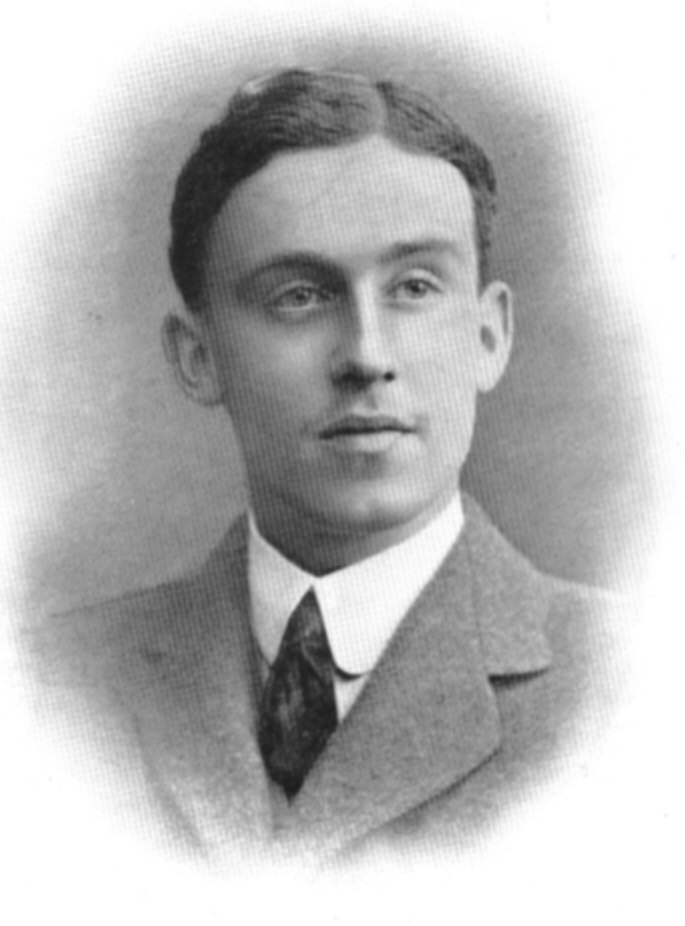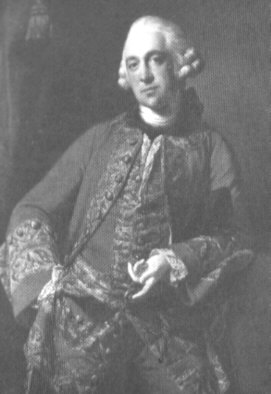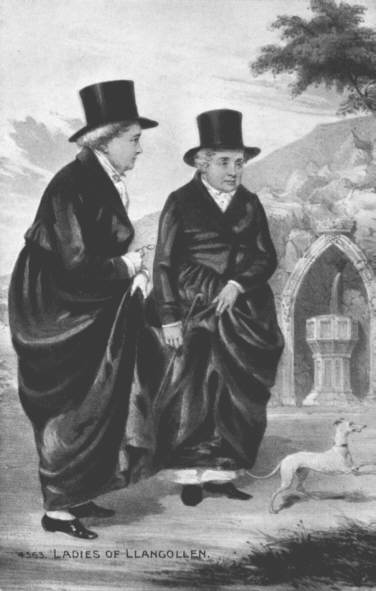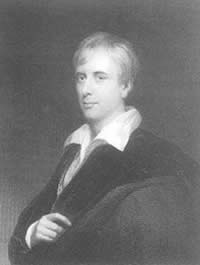|
Local
People
 The Williams Wynns of
Wynnstay The Williams Wynns of
Wynnstay
The Williams Wynn family were major
landowners in north Wales and had a great influence on the
political, cultural, social and literary life of Wales. The
principal estate of the family was at Wynnstay, Ruabon, but
they owned (and still do) much land in the Llangollen and
Llantysilio area. At the Grand Banquet at Wynnstay in 1875 the
tenants of all the Williams Wynn property in Llangollen and
Llantysilio were invited to the feast. Shown here is a photo
of Sir Watkin Williams Wynn in 1912.
The Williams Wynns were an
amalgamation of two important families. The Williams family were descended from Cadrod Hardd,
Cheiftan of part of Anglesey. The Wynns
can trace their pedigree in a straight male line back to Roderick the Great, King of North
Wales, who was killed
in the year 876. The two families were united in the early
18th century when the second Sir William Williams joined the
Wynn family by marrying Jane Thelwall, grand-daughter of
William Wynn, sixth son of the first baronet of Gwydir. These
became the parents of the first Sir Watkin Williams Wynn of
Wynnstay, who added the name of Wynn to that of
Williams. |
| |
|
The
Myddelton family claims descent from Ririd Flaidd (‘the
Wolf’), lord of Penllyn, Pennant and Bryn in Meirionnydd, who
died in 1207. The English surname was adopted by a late
fourteenth-century descendant Ririd, on his marriage to
Cicily, daughter of Sir Alexander Myddelton, lord of Myddelton
in Shropshire. By the mid 16th century, several members of the
family were in high office in Denbighshire.Sir Thomas
Myddelton (1550-1631) was one of the sixteen children of
Richard Myddelton, governor of Denbigh Castle. He was a
founder of the East India Company and in the 1590s gained rich
rewards from financing the great buccaneering expeditions of
Drake. Raleigh and Hawkins. Some of the profits went into his
purchase of the Chirk estate in 1595, although he continued to
live mainly in London. Over the following 400 years the
Myddeltons acquired much land in the areas around Llangollen
and Llantysilio.The estate was passed down through the
generations and upon the death of Richard Myddelton in 1795
(see picture), and of his son a year later, Chirk Castle was
inherited by his eldest daughter Charlotte. She married Robert
Biddulph in 1801 and he changed his name to Myddelton
Biddulph. It was their grandson Richard (1837-1913) who
reassumed the name of just Myddelton in 1899. The Myddelton
family continue to live at Chirk Castle, maintaining an
unbroken connection with the estate. |
| top
of page |
Lord Tottenham, the Bishop of Clogher, was a significant landowner in the area
in the 19th century. In the 1850s Major Tottenham
lived at Plas Rhysgog and afterwards the Tottenham family
settled at Plas Berwyn. They were generous benefactors to the
town and area. The great east window in St Collen’s Church was
a gift from them and Berwyn Station was built for the use of
the family in exchange for allowing the railway to cross their
land. Indeed, Major Tottenham was a major shareholder in the
new railway and one of the major movers in getting it built.
TheTottenhams left Plas Berwyn and moved to Canada in the
1950s. |
|
The Ladies of
Llangollen
Eleanor Butler and Sarah Ponsonby moved into the small
stone cottage of Pen y Maes in 1780, having run away from
their families in Ireland two years previously. Re-naming it
Plas Newydd (New Hall) they made extensive improvements to the
house and created new gardens. The ‘Ladies of Llangollen’
finally purchased the house in 1819 and went on to live there
until their deaths in 1829 and 1831. Over the years they
became known for their eccentricity, preferring always to
dress in dark riding habits, and played host to many famous
people, including the Duke of Wellington, Sir Walter Scott and
William Wordsworth. After the death of the Ladies Plas Newydd
was purchased by another two spinsters, Amelia Lolley and
Charlotte Andrew, who attempted to emulate the Ladies’
lifestyle. |
| top
of page |
|
W.T. Simpson moved to Llangollen and was so charmed by the
beauty of the surrounding countryside and the former political
importance of the neighbourhood that he was moved to make some
notes on the history of the area. H was advised by some of his
friends to publish and in 1827 ‘Some Account of Llangollen and
its Vicinity’ was presented to the public. This small volume
is an invaluable record of the town and area at the beginning
of the 19th century. |
|
|
Visitors and Travellers
|
|
George Borrow’s account of his tour through Wales in 1854
gives a fascinating glimpse of life in a different age. We are
fortunate that Borrow based himself in Llangollen for an
extended period during his time in Wales and as well as
exploring the town journeyed out into the surrounding
neighbourhood.
Borrow was over 50 when he planned his incursion into ‘Wild
Wales’. Save for one tour in Middle Europe and a recent visit
to Cornwall, he had long been settled in the neighbourhood of
his birthplace, East Dereham in Norfolk. Had Borrow consulted
his publisher before planning his holiday, he would have been
reminded that no ordinary Anglo-Saxon reader of the 1850s had
the remotest interest in the life and letters of Wales. But
this was one of the very reasons that had induced Borrow to
study the Welsh vocabulary and the poetry of the bards. His
pilgrimage to Wales was undertaken principally to satisfy his
own curiosity.
Borrow had written a number of books before publishing Wild
Wales. He had won acclaim with two early Spanish books and
then lost it again when he published Lavengro. Romany Rye was
in his publisher’s hands as he embarked upon his tour of
Wales, but was to remain there for 3 whole years before being
printed. Wild Wales did not achieve any level of early success
when it was first published in 1862, being little to the taste
of Borrow’s contemporaries. It was only in much later times
that Borrow’s work was recognised as being the excellent diary
that it. Wild Wales is probably the best invitation to Wales
that has ever been written in English and reveals much about
Wales and the Welsh, as well as giving an insight into the
author himself.
|
| top
of page |
|
Thomas Pennant was born in 1726 at Downing Hall in
Flintshire. It was a small house with a large garden and this
started an early interest in nature. His early schooling was
in Wrexham and then he went to school in London and on to
Queens College Oxford. Whilst at Oxford he went on his first
tour and afterwards went on to travel on the continent.
Most travellers of that time depended upon their own resources
but Pennant was quite willing to entrust his travel
arrangements to others. The biggest influence on him was
Edward Lhuyd and, like Lhuyd, Pennant sent ahead questions to
prominent people in local society to first ascertain the lie
of the land.
Pennant was non Welsh speaking and to overcome the problem
of not being able to understand local people he relied upon
his friendship with John Lloyd – a schoolmaster and historian
from Caerwys who went with Pennant on all of his journeys
through Wales. Indeed, so great was his reliance upon John
Lloyd that there remains some question as to how much of
Pennant’s work was recorded by him and how much by John Lloyd.
Pennant’s work was enriched by another companion, Moses
Griffith, who was employed by Pennant to illustrate his books.
Griffith’s sketches were accurate in detail and this helped to
sell many of Pennant’s books.
Pennant journeyed through Wales going from one large estate
to another. This let hin inspect the contents of many of the
libraries of the large landowners, but also prevented him to a
large extent from meeting many of the ordinary people.
Pennant’s ‘Tours’ are presented as a continuous journey but
were in fact compiled from many separate individual
excursions.
He wrote his autobiography, called A Literary Life, in 1793
and died in 1798. |
| top
of page |
|
Edward Lhuyd lived between 1660
and 1709. He was the first Welshman to place Welsh studies on
a firm foundation, analysing the linguistic links between
countries where Celtic languages were spoken. In addition he
was an expert geologist and botanist and won recognition
throughout Europe.
Lhuyd's two great contributions to
the history of the Llangollen and Llantysilio area were his
recording in 1696 of the inscription on the fallen Eliseg's
Pillar and a volume of writing that he produced entitled
Answers to Parochial Questions - a sort of glossary of people
and places existing in the area at the time of his visit in
the late 17th century. |
|
|
|
The Reverend Bingley was a resident of Cambridge when, in
1798, he was induced by accounts that he had heard to
'appropriate three months to a ramble through all the most
interesting parts of North Wales'. He had previously made a
number of tours through many parts of northern England but
declared that the four counties of North Wales that he visited
(Denbighshire, Caernarvonshire, Merionithshire and Anglesey)
were far more interesting. The Reverend Bingley travelled
mainly on foot and around 15 pages of his volume on North
Wales are give to descriptions of Llangollen, Llantysilio and
the surrounding area. |
 top
of page top
of page |
| |
 The Williams Wynns of
Wynnstay
The Williams Wynns of
Wynnstay

